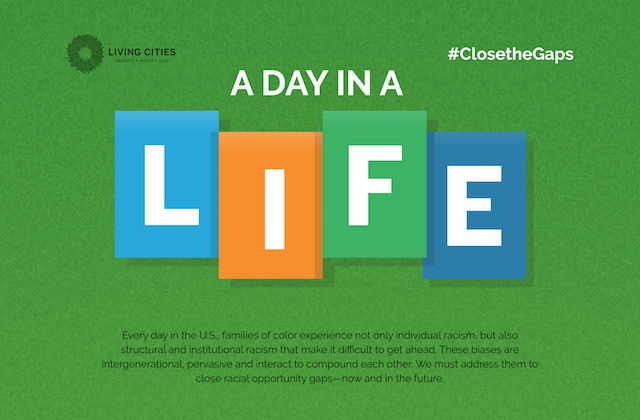Living Cities
Medium, September 11, 2017 —
Living Cities is a collaborative of 18 foundations & financial institutions building a #NewUrbanPractice that gets dramatically better results for low-income people, #faster.
At Living Cities, we’re working to get dramatically better results for low-income people faster, particularly people of color. To do this work, we must be clear that racism isn’t limited to Tiki torches and small-town violence. There are both historical and contemporary policies and practices that continue to have disparate effects on people of color throughout their lives. From something as quotidian as commuting times to larger systemic barriers and implicit bias, it is structural racism and White supremacy that has created and continues to create inequities in health, housing, education and beyond. For many people of color, these barriers appear in their day-to-day lives.
The narrative that an individual’s personal choices or culture produces these disparities only helps those in power neglect the necessary changes that would foster a more equitable society. This false narrative gives an easy out. If we want to be successful in our goal of achieving dramatically better results, we all have to continually reflect on the ways we might contribute to the narrative.
There is no easy way to visualize the lived experiences and oppression of people of color. The story of the Reddings, shown here, reflects only a fraction of what communities of color have to face every day. We hope that the story of the Reddings, however, makes it clear why we must address systemic racism to close opportunity gaps. Only by driving home, over and over, how these gaps are created and perpetuated can we begin to dismantle them. As the infographic shows, if life is a game, it is rigged.

To download the infographic, please visit Living Cities’ Resource page.
To get more information on how to close racial opportunity gaps, go to our Racial Equity and Inclusion page.











